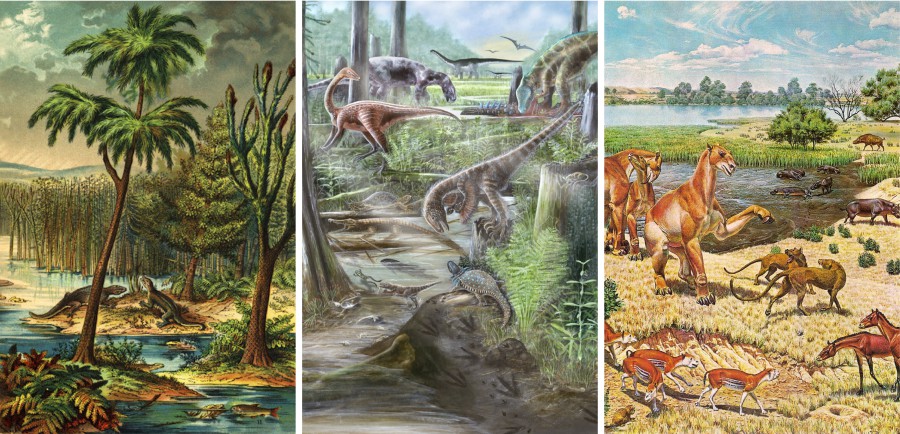
Land vertebrate communities through the Phanerozoic (Cambrian and later)
According to a recent study, land diversity has been about the same for the sixty million years following the extinction of the dinosaurs:
According to a new study led by researchers at the University of Birmingham and involving an international team of collaborators, the number of species within ecological communities on land has increased only sporadically through geological time, with rapid increases in diversity being followed by plateaus lasting tens of millions of years.
Previously, many scientists have argued that diversity increased steadily through geological time, which would mean that biodiversity today is much greater than it was tens of millions of years ago. But building an accurate picture of how land diversity was assembled is challenging because the fossil record generally becomes less complete further back in time. By using modern computing techniques, capable of analysing hundreds of thousands of fossils, patterns are starting to emerge that challenge this view…
The team focused on data from land vertebrates dating back to the very earliest appearance of this group nearly 400 million years ago.
They found that the average number of species within ecological communities of land vertebrates have not increased for tens of millions of years. Their results suggest that interactions between species, including competition for food and space, will limit the overall number of species that can co-exist. “Diversity on land is not higher today than in the past, study shows” at University of Birmingham
That wasn’t what we expected to hear, of course. But it makes sense that there would usually be as many animals of interdependent types as could physically support themselves in the environment.
See also: Can DNA survival change the meaning of extinction?
and
Could giant marine mammals have been wiped out 2.6 million years ago by a supernnova? In a puzzling extinction, something took out giant shark Megalodon and 36% of big marine animals generally
Follow UD News at Twitter!